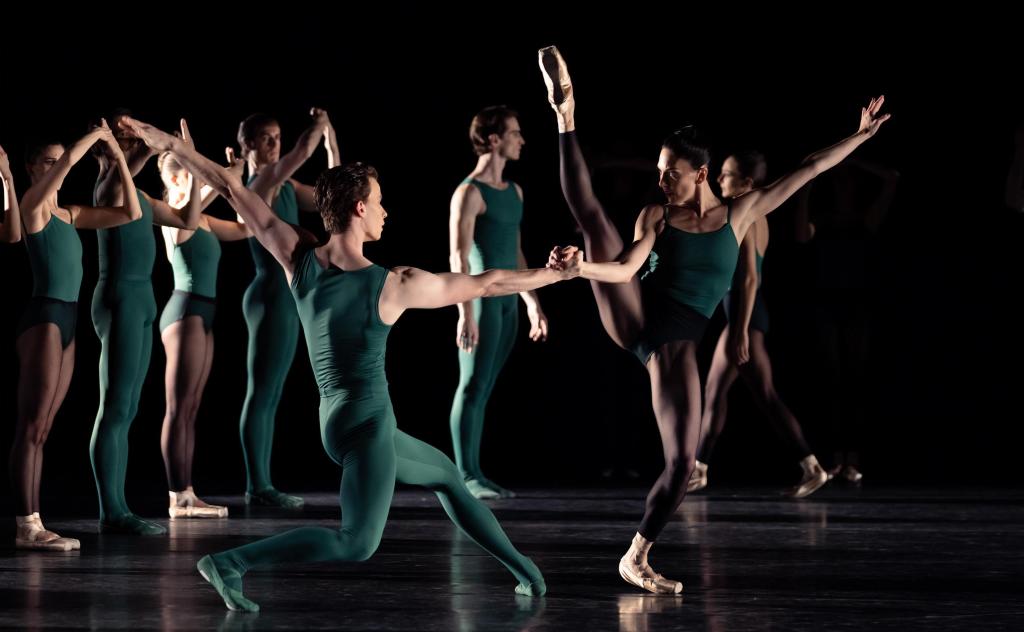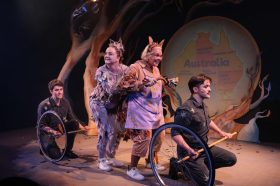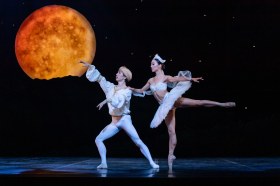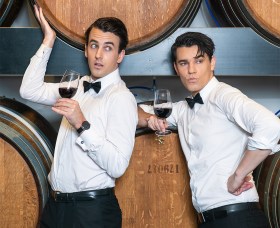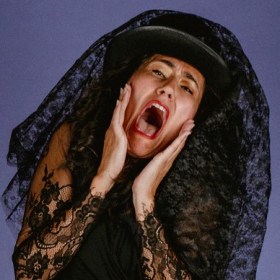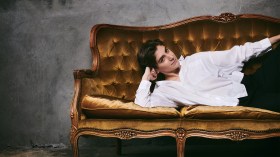Counterpointe presents an imaginative and impressive debut by The Australian Ballet’s new Artistic Director, David Hallberg. The technique, romance and spectacle of classical ballet is cleverly pitted against an arresting and artistically exciting contemporary piece in a bold, brave and accessible collection of three distinct and landmark pieces.
The three works begin with the classical romantic exuberance of the third act wedding of Raymonda, choreographed by Marias Petipa and staged by Hallberg. First performed in 1898 in St Petersburg, the wedding scene is perhaps the most famous part of the ballet. It fuses Hungarian folk dance with classical ballet in a technically challenging piece. The Australian Ballet first performed the piece in London with Margot Fonteyn and Rudolf Nureyev in the leads, but the piece has not been seen in Australia in a generation.
Hugh Colman’s set and costumes are beautifully subtle, elegant and classical: a draped rust sash curtain and candelabra are suspended above the stage, and the dancers wear complimentary cream and rose gold tutus. The effect is to give a clever suggestion of the spectacle the full production might offer despite the subtler staging needed in an evening of extracts. The performances too reflect a production that is less provocative and flamboyant, while retaining the spirit of the piece. The ensemble step back slightly from choreographic challenges, and technically accomplished principal artist Amber Scott is coquettish rather than cocky as Raymonda when she famously claps her hands at the audience to get their attention.
The second piece is George Ballanchine’s Tchaikovsky Pas de Deux. The orchestral piece, originally composed by Tchaikovsky for Swan Lake, was ‘discovered’ languishing in the archives of the Bolshoi Theatre in Moscow by Ballanchine in 1953. Ballanchine gained permission to use the composition, and the result is an elated celebration of the classical dance duet. The Australian Ballet’s staging (by Sandra Jennings) is simple, almost clinical, with muted tones of blue and silver. This contrasts dramatically with the joyous romance of the choreography and performances. Ako Kondo and Chengwu Guo are delightful as the romantic duet. Guo is vivacious and commanding on stage, while Kondo is delightfully tender, and the pair deserved the rapturous applause they received from the audience.
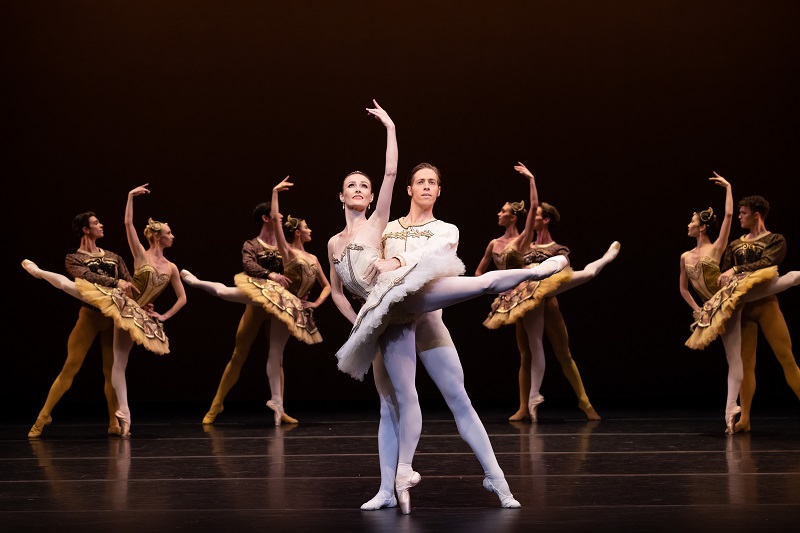
Amber Scott and Ty King-Wall in Raymonda (Act III) as part of The Australian Ballet’s Counterpointe. Photo credit: Daniel Boud.
The third and final piece, Artifact Suite, contrasts starkly with the other two works, presenting a revolutionary contemporary piece by the renowned German/American choreographer William Forsythe. The curtain lifts and falls on a series of dramatic vignettes set to arresting music by Bach and Eva Crossman-Hecht. The piece was created in 1984, and is both exhilarating and confronting, challenging our ideas of what dance is, and what it can do.
Forsythe takes as his premise the political nature of the origins of ballet in the courts of 17th century Europe, where epaulement was as much a show of power and wealth as of elegance and entertaining spectacle. Artifact Suite grew out of a movement for dance as theatre developed during the 20th century where choreography told stories, created characters and made statements. The Australian Ballet presents a small snippet of the much longer piece, which encompasses four acts. It has been staged by guest repetiteur Kathryn Bennett, who worked with Forsythe in Germany in the 1970s.
The staging is dramatic, with earthy green leotards, stark lighting, dramatic shadows and exposed stage wings. The symbiosis of dance and music is important to this piece, and the dancers work hard to synthesise the complicated and mathematical score and choreography. The performers obviously relish the challenge, and the performance is both exhilarating and exciting. The harsh and erratic piano is achingly haunting and expertly executed by Kylie Foster. The full drama of the longer piece, which incorporates characters and speech as well as dance, can only be alluded to in this short section, but as it builds to a relentless and rhythmic finale, it’s an exhilarating end to an impressive program of dance.
Four stars:
Counterpointe
The Australian Ballet
Joan Sutherland Theatre, Sydney Opera House.
27 April – 15 May 2021
